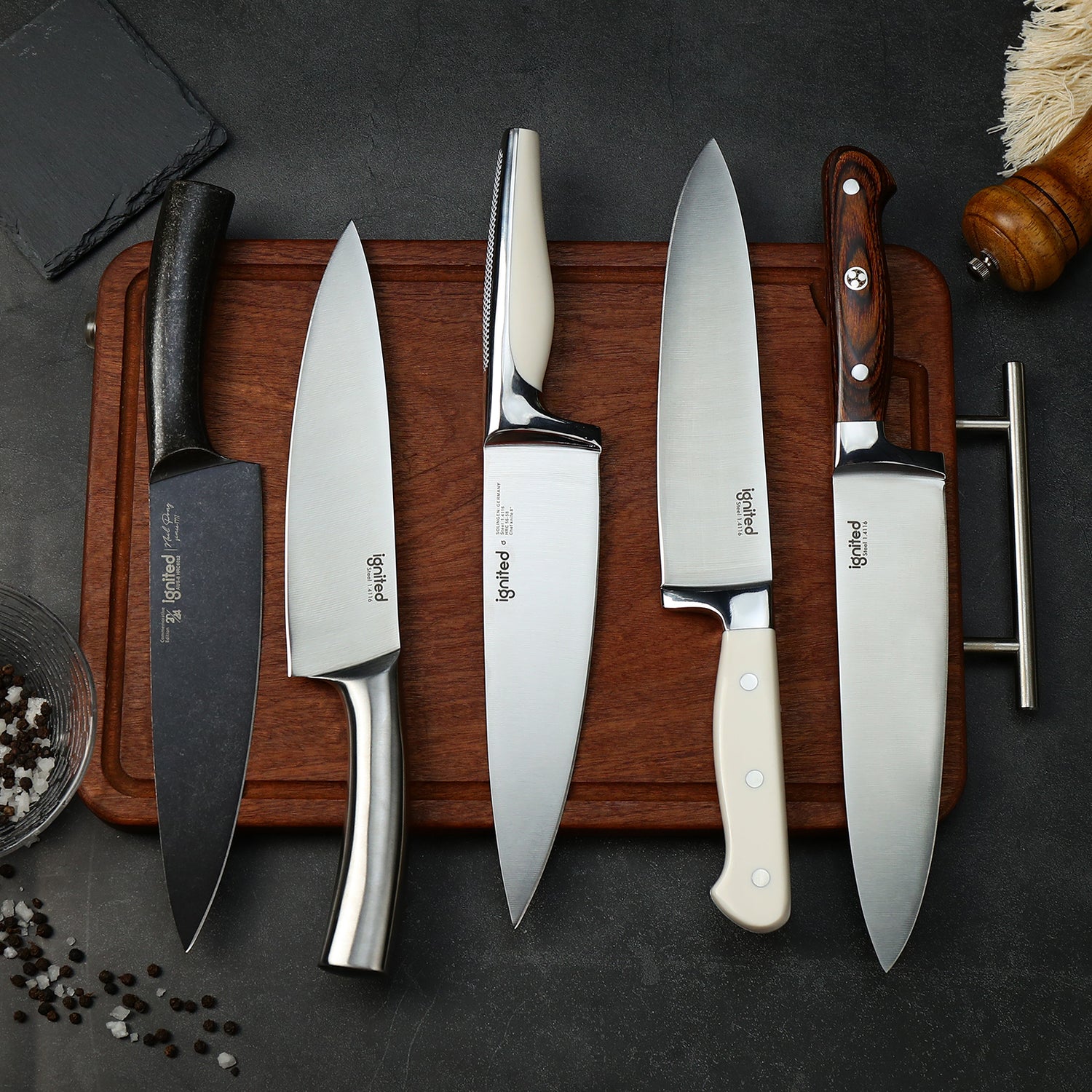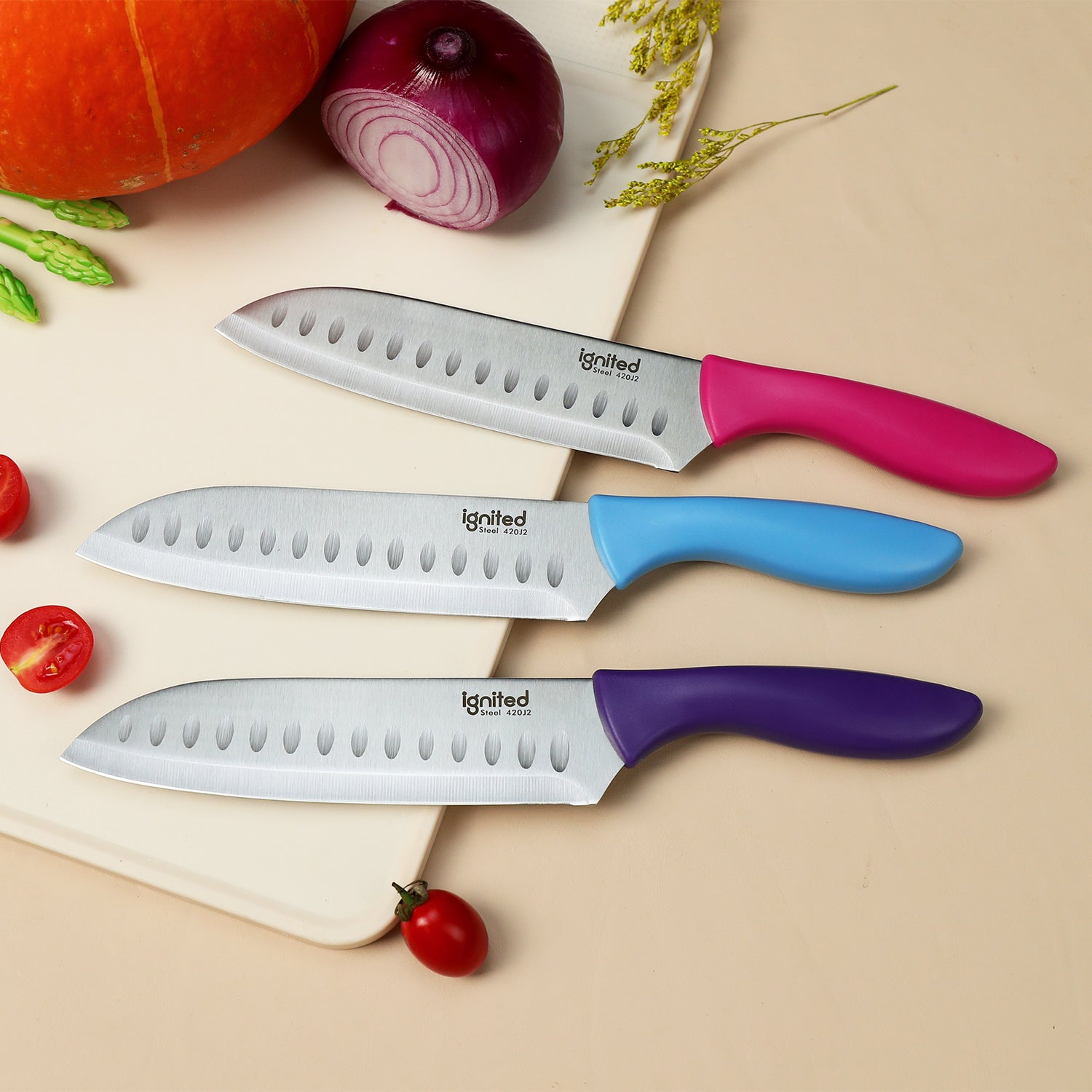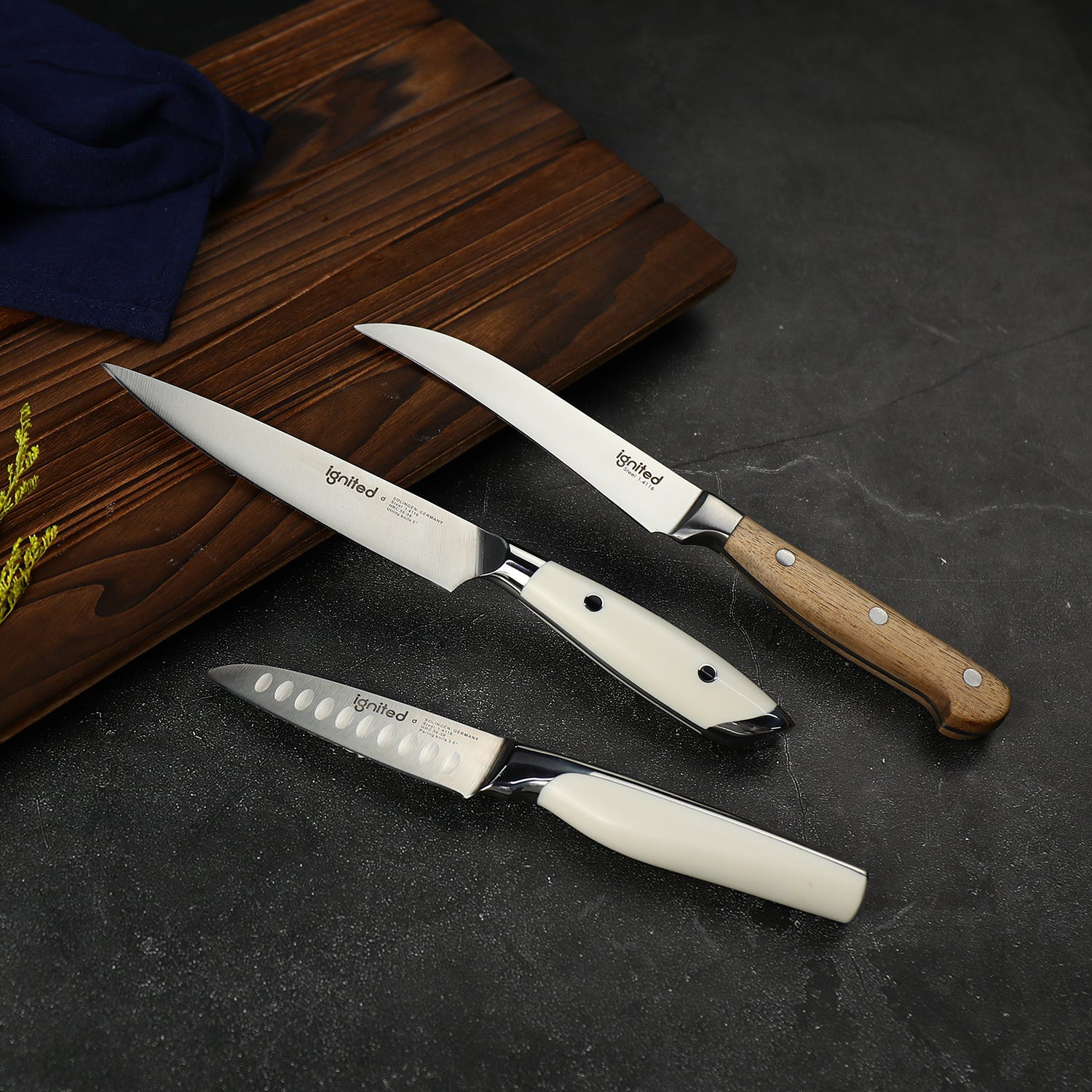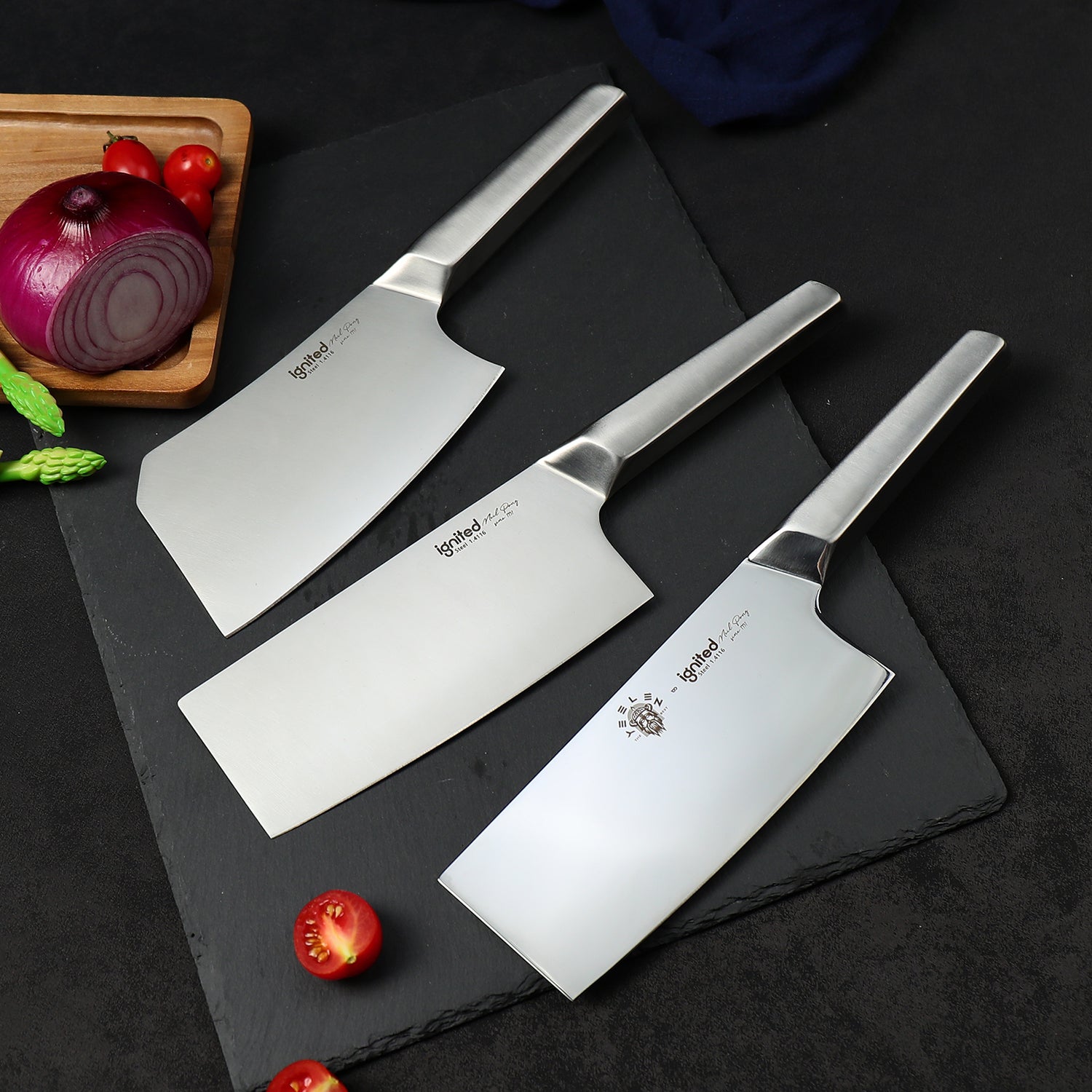Ever wondered what makes a kitchen knife effective and versatile? It's all in the details. A high-quality knife is the result of precise design — every part has a function. In this guide, we’ll explore each part of a kitchen knife, from the sharp tip to the solid tang, and explain what role it plays in your cooking experience.

1. Tip
The tip is the pointed front section of the blade, often used for delicate tasks like scoring, slicing small items, or making detailed cuts. A sharp tip helps with precision, especially when dealing with herbs, shallots, or trimming fat.
2. Edge (Cutting Edge)
The edge is the sharpened part of the blade that does the cutting. It can be straight or slightly curved. A smooth edge is ideal for clean slices, while a serrated edge is better for bread or tomatoes.
3. Belly
The belly refers to the curved portion of the blade near the middle. It’s ideal for rocking motions, such as mincing garlic or herbs. A larger belly means more surface area and smoother cuts.
4. Spine
The spine is the top (non-cutting) edge of the blade. It affects the knife's overall weight and strength. A thicker spine adds durability, while a thinner spine offers more agility for fine slicing.
5. Heel
Located at the rear of the blade, the heel is the widest and strongest part. It’s used for tougher cuts, like cutting squash or splitting chicken bones. The heel allows for maximum force and leverage.
6. Bolster
The bolster is the thick junction between the blade and handle (common in forged knives). It provides balance, adds weight, and protects fingers during use. Not all knives have a bolster.
7. Tang
The tang is the metal extension of the blade that runs into the handle. A full tang (extending the entire length of the handle) adds durability, weight, and balance. Partial tangs are lighter but less strong.
8. Handle
The handle is where you grip the knife. Materials vary — from wood and plastic to resin and steel. A good handle should feel secure, ergonomic, and comfortable even during extended use.
9. Rivets (if applicable)
Rivets are small metal pins that secure the handle to the tang. Found mostly on full-tang knives with composite or wood handles, they ensure structural integrity and durability.
Conclusion
Now that you know the full anatomy of a kitchen knife, you'll be better equipped to choose the right knife and use it effectively. Every part — from the tip to the tang — plays a critical role in performance and comfort. Explore our expertly crafted Ignited Cutlery knives and experience precision at your fingertips.




